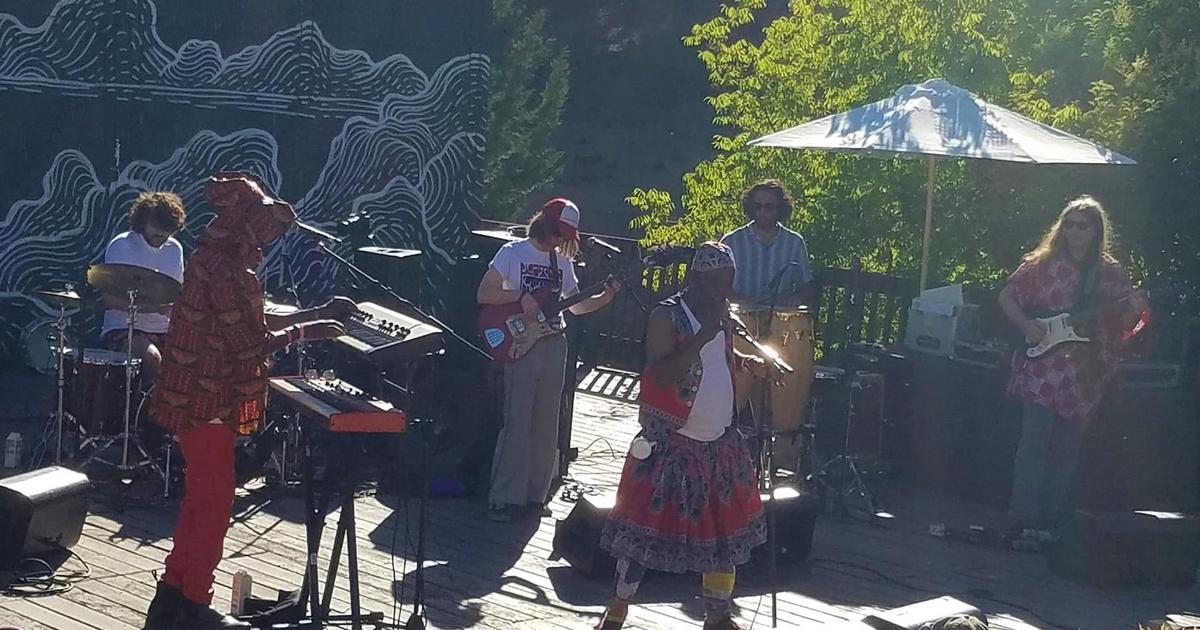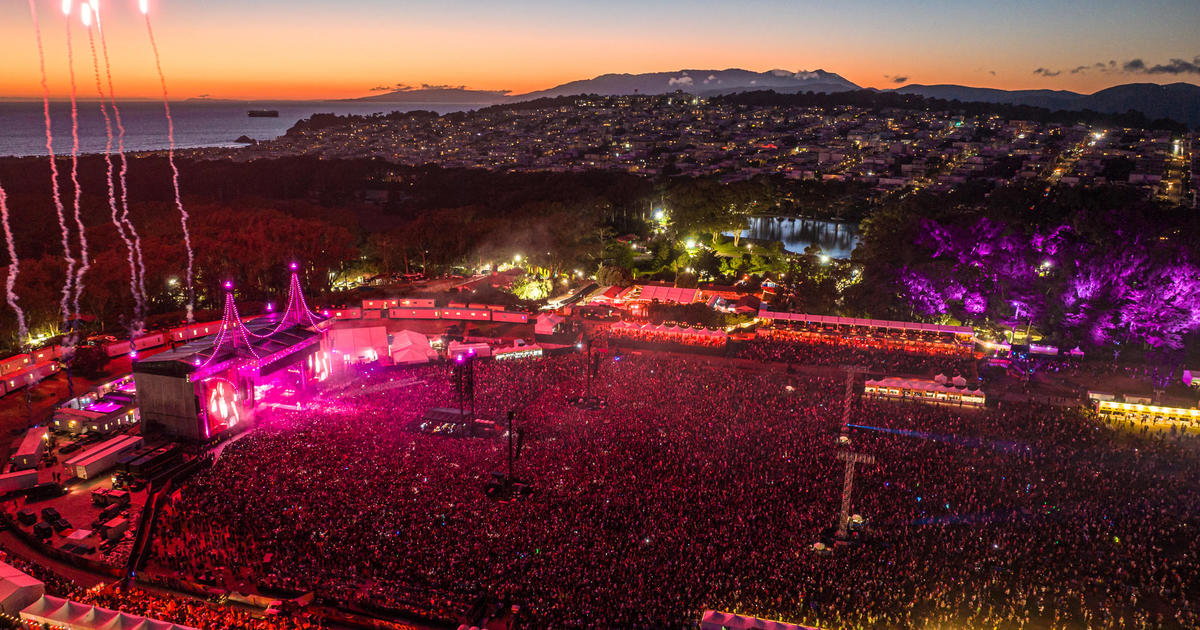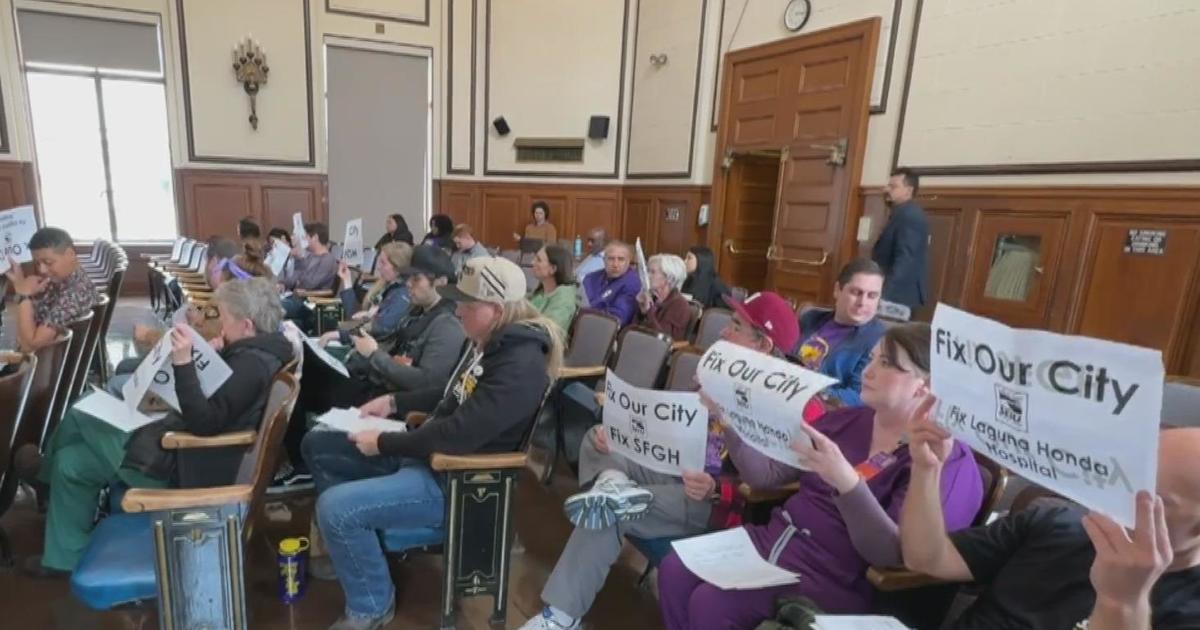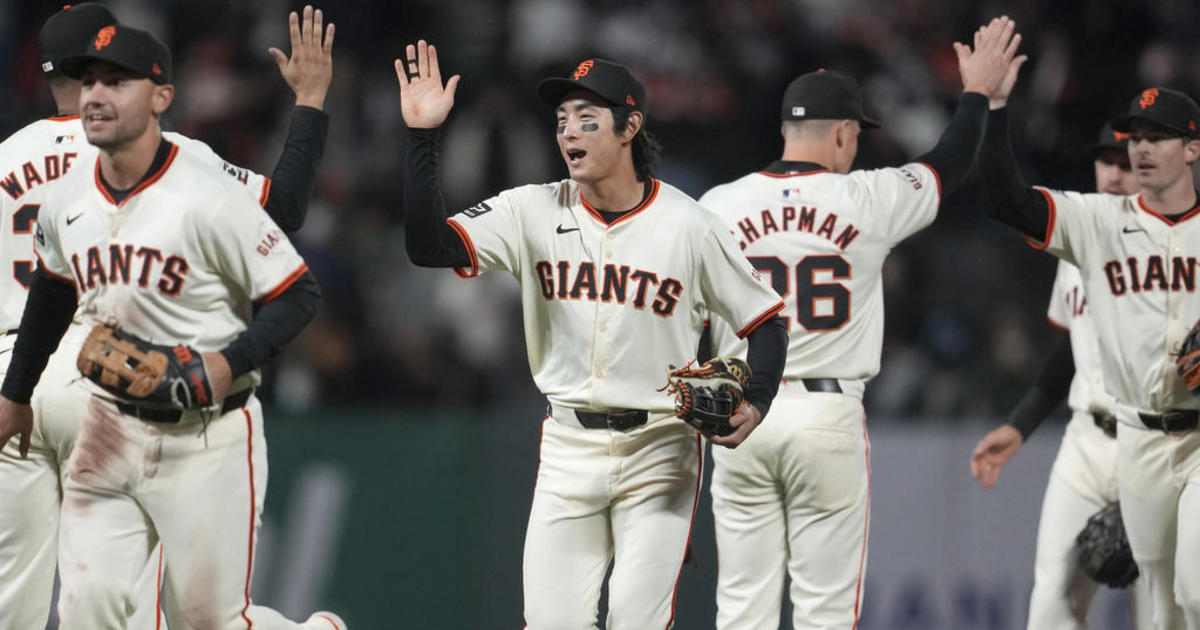CBS SF Talks To Melvins Documentary Co-Director Bob Hannam
SAN FRANCISCO (CBS SF) -- For over three decades of playing by their own rules as the principles behind massively influential sludge-rock mavericks The Melvins, guitarist Buzz Osborne and monster drummer Dale Crover have co-piloted the seminal underground band through a wildly diverse range of sounds. Inspired equally by the lumbering monolithic riffs of Black Sabbath and the willful dissonance of early punk greats Flipper and Black Flag, the Melvins have build a huge catalog of music defined by their tuneful and fearless exploration of heavy music.
First coming together in the small Washington state town of Montesano, their formative years of gigging around the Northwest during the early-to-mid 1980s planted the seeds that would grow into a revolution among Northwestern bands that rose to fame in the '90s. From their post-grunge flirtation with major labels during that decade through a revolving door of bass players and the group's subsequent rise as prolific and respected elder statesmen of experimental rock, the Melvins have blazed a singular path that has earned the band one of the most loyal and rabid fan bases on the planet.
Given the band's importance and lasting impact on modern rock music, it's a wonder the Melvins haven't already been the subject of a documentary film. Seven years ago, British-born Bay Area resident Bob Hannam aka "English Bob" -- a veteran in the music merchandising business and longtime friend of the band -- first started shooting footage during a 2009 tour. That step began a long-gestating plan to make a documentary that would eventually find Hannam teaming up with another Melvins enthusiast and prospective filmmaker, Portland, OR resident Ryan Sutherby two years ago.
The final product of their collaboration, The Colossus of Destiny: A Melvins Tale, had a private premiere screening in Los Angeles last May. Featuring extensive interviews Osborne and Crover as well as contemporaries and collaborators including Mike Patton (Faith No More, Mr. Bungle, Fantomas), Soundgarden singer and solo artist Chris Cornell, Dead Kennedys founder Jello Biafra, Kiss bassist Gene Simmons, Nirvana bassist Krist Novoselic among many others, the movie will finally see it's first screening in San Francisco (the city the Melvins called home for an extended period starting in the late '80s) at the Alamo Drafthouse on Monday, July 18. That screening will be followed by a number of West Coast showings of the film that will include appearances at the Don't Knock the Rock Film Festival in Los Angeles and the Psycho Las Vegas music festival.
CBS San Francisco recently conducted an interview with co-director/co-producer Hannam to discuss his work on the collaborative film and the producers plans to make it available to a wider audience.
CBS SF: As someone who has worked in the music industry for so long, were the Melvins the first band you considered as a subject for a film? Or were they just the first band that you had the access and time to shoot?
Bob Hannam: I never had any real aspirations that I would make a film, but I had a couple of bands in mind for a while who I thought should have their story told by someone. Both had been around at that time for almost 30 years, were still producing and performing great music, but had never got the recognition I thought they truly deserved. One was the Melvins, and the other was New Model Army, who are from my hometown of Bradford in Northern England. I caught wind of someone starting to make a film about New Model Army, which finally came out in 2015. So once I thought more about actually making a film, I shifted my focus to the Melvins.
CBS SF: When you first took the camera out on tour with the band in 2009, what was the band's reaction?
Bob Hannam: I had been friends with the band for a while and they asked me to go on a European tour with them in the winter of 2009. The day before I left I went and bought a small hand-held video camera with the intention of starting to get some footage together. After a couple of shows, I remember Buzz and Dale asking me what I was going to do with the footage I was filming and I said I wanted to make a film about the band.
Their response was, "Oh, a bunch of people have said they were going to do that before, but nothing has ever come of it." So I replied, "Well I will do it!" And they both said, "Ok, go ahead." And they let me film whenever I was around after that.
CBS SF: Were you and Ryan Sutherby taking similar approaches before you combined forces on the film? He'd been filming shows for a decade, but had his footage concentrated on performances? Or had he started getting interviews too?
Bob Hannam: Ryan had been filming live footage from the crowd for a long while and he had put some of his stuff up on YouTube for people to see. Whereas when I started in 2009, I had access to film from the stage and at soundchecks and backstage. And I kept all mine private because of my plan to put it into a film. Between the both of us, we have a lot of personally filmed footage from the last 15 or so years, most of which has never been seen before.
In terms of starting the interview process, Ryan is friends with the original drummer Mike Dillard, and he had spoken to him about wanting to make a film. So Mike hooked it up for Ryan to go to L.A. at the same time he was recording the Tres Cabrones album with Buzz and Dale in June of 2012, and he had the chance to sit down with the three of them then. After that, he did some sporadic interviews over a couple of years with people like Matt Lukin and Trevor Dunn.
CBS SF: When did you start getting sit down interviews with associated parties and other musicians about the band?
Bob Hannam: The first interview I did was whilst I was filming the Melvins Residency shows at Spaceland in L.A. they did in January 2011. Shepard Fairey came and DJ'd one of the shows. I told him about my plan for the film and he was on board to do an interview over at his studio the next day. After that, I didn't really start interviewing more people, because I was still busy touring full time with Neil Young and I just slotted in filming and stockpiling live footage whenever I had chance to catch the band. Then once I got wind from Dale in the summer of 2013 that Ryan had been to interview them for a possible documentary, I decided to case him out and see how serious he was about making it.
I went up to him at the end of the New Year's Eve show at the Great American Music Hall here in SF and asked what his plans were. And I said that I would be interested in joining forces if he was up for it. We chatted some more over the next few weeks and decided to throw our efforts together. Which was great, because it really motivated me into getting it going and making a finished product become a reality for the both of us. So we swapped notes on who we wanted to get in front of the camera and within a couple of months we were off and running and tracking people down.
CBS SF: Did you find there was much overlap in what the two of you had as you pooled your footage and efforts?
Bob Hannam: There wasn't really that much overlap, no. Ryan is based in Portland so he had filmed a bunch in the North West and also at some of the AmRep shows in Minneapolis and one of the ATP shows over in England. And i was traveling all over the place for work and so had footage from Europe, and some of the other ATP shows in England, and a bunch of stuff in SF and L.A from being based here in California.
CBS SF: Was there any particular person/people that you wanted to talk to for the documentary that was unavailable or unwilling to appear in the movie?
Bob Hannam: Well, we of course wanted to talk to everyone that had been in the band, but knew in all reality that it might not be possible to get them all on board. We reached out to Joe Preston many times and he just wasn't into talking about that period of him being in the band. I met up with Mark Deutrom down in Austin and chatted with him off camera for a good 90 minutes about his time with the band and our vision for the film, and he was very friendly and said he would think it over.
After I reached out to him again a month or so later, he said he had talked with Lori Black -- who he was still friends with -- about the film. She had expressed that she didn't wish to be part of it, and he felt the same way and would also decline to be interviewed. Which was very disappointing, as they all played on some great records and the main focus of the film was always to celebrate the band's history and not be some kind of mud-slinging spectacle, but we have to respect and honor their decisions to not appear.
CBS SF: I'm sure covering the full 30+ year history of the band in the space of a two hour movie was a challenge. Was there any portion of the band's history that you would have liked to have given more time that ended up on the cutting-room floor?
Bob Hannam: A challenge is a huge understatement! The initial skeleton for the story line was almost three and a half hours long. So there was a lot of scaling down that needed to be done to get it to it's final length of around two-hour mark. We cover pretty much everything about the Melvins up to the middle of 2015. There are some side projects and topics and more expansive details about certain periods that had to be put aside or heavily condensed, but I think that the film covers everything very well in the time length that we have. It really is a "don't blink or you might miss something" documentary.
CBS SF: I know you mentioned in the interview with Naked Rob on Radio Valencia back in 2014 that you still had a lot of footage to go through/digitize. Were there any gaps in terms of video of the band at a certain point in their history, or were all eras pretty much covered?
Bob Hannam: The only real gap in footage that is noticeable is the early period of the band from 1983 to 1988. We searched every avenue and connection possible to find live clips that weren't already on YouTube from that period but pretty much came up with nothing. I guess nobody had the big expensive VHS cameras that were available back then smuggled into their pocket at Melvins shows.
But other than that we had a ton of footage we could pick from. Dale gave me 2 storage containers containing over 60 video tapes of shows that people had filmed and given him copies of, so that was huge to have available for us to use. Some of it is already out there on the internet, but a lot of it is unseen. We wanted to try and use as much of that as possible.
CBS SF: Do you have any favorite era or line-up of the band and did that change over the course of making the film?
Bob Hannam: Not really, no, I pretty much like them all. I have got to know most of the people that have worked with the band either through my friendship with Buzz and Dale over the years or from working on the film. And i have to say, they are all really great people; not a bad one in the bunch. Musically, they have all brought something different to the musical direction of the band, but it always remains the Melvins sound.
CBS SF: How did you hook up with Craig McGillivray as an editor?
Bob Hannam: I am good friends and play in a band with Joey Osbourne from Acid King and Altamont [a Dale Crover side project] and his old roommate was Craig McGillivray. I had met Craig a bunch of times in the seedy drinking establishments we frequent in the Mission District. When I was wondering who I could get to edit the film, it was Joey who put Craig's name into the mix.
I was aware that he worked in film in various capacities and that he was a fan of the band, but he also knew their story from back in the '90s when they lived in SF. So that was a huge bonus to have him on board, safe in the knowledge that he knew who the Melvins were and what we were trying to put across in the story. Full credit goes to Craig, because he put in so many hours going through all the footage we had acquired and ripping them to pieces to be able to slot the relevant parts into the relevant places. We seriously wouldn't be where we are today with this project without his hard work.
CBS SF: Are you shopping the movie around as far as possible video on demand or online viewing options?
Bob Hannam: Right now, it is one step at a time. The first priority is getting it out and seen in theatres, as I am a firm believer that people should really witness film as an art form on a big screen with a decent sound system, not on a small 15" screen. So we are lining up a bunch of theatre screenings over the next few months, starting with the West Coast, and hopefully show it to as many people as possible in theatres across North America and the rest of the world.
Then after that, we have a commitment to the almost 1,000 people who contributed to the Kickstarter and really helped make the film happen, in getting them a copy in a download or DVD/blu-ray format. And as soon as that is done, people will be able to buy a copy in all formats. So we haven't decided on what platform the online viewing option will be as of yet, and are open to all offers if they come our way. But we are hoping to have things available before the end of the year.
CBS SF: Have you guys figured out what additional footage you might be including in the DVD release? Any highlights that come to mind that fans will be particularly interested in?
Bob Hannam: We will have a whole bunch of longer segments of the many interviews in there. We sat down with people for maybe an hour long chat, and only used a couple of sentences in the film, so that will be good for people to see more in-depth discussion. And the same with live footage, only 10 or 15 seconds are seen in some of the clips, so to have full song performances in the extras will be really cool. Plus some other surprises will be thrown on there too.



